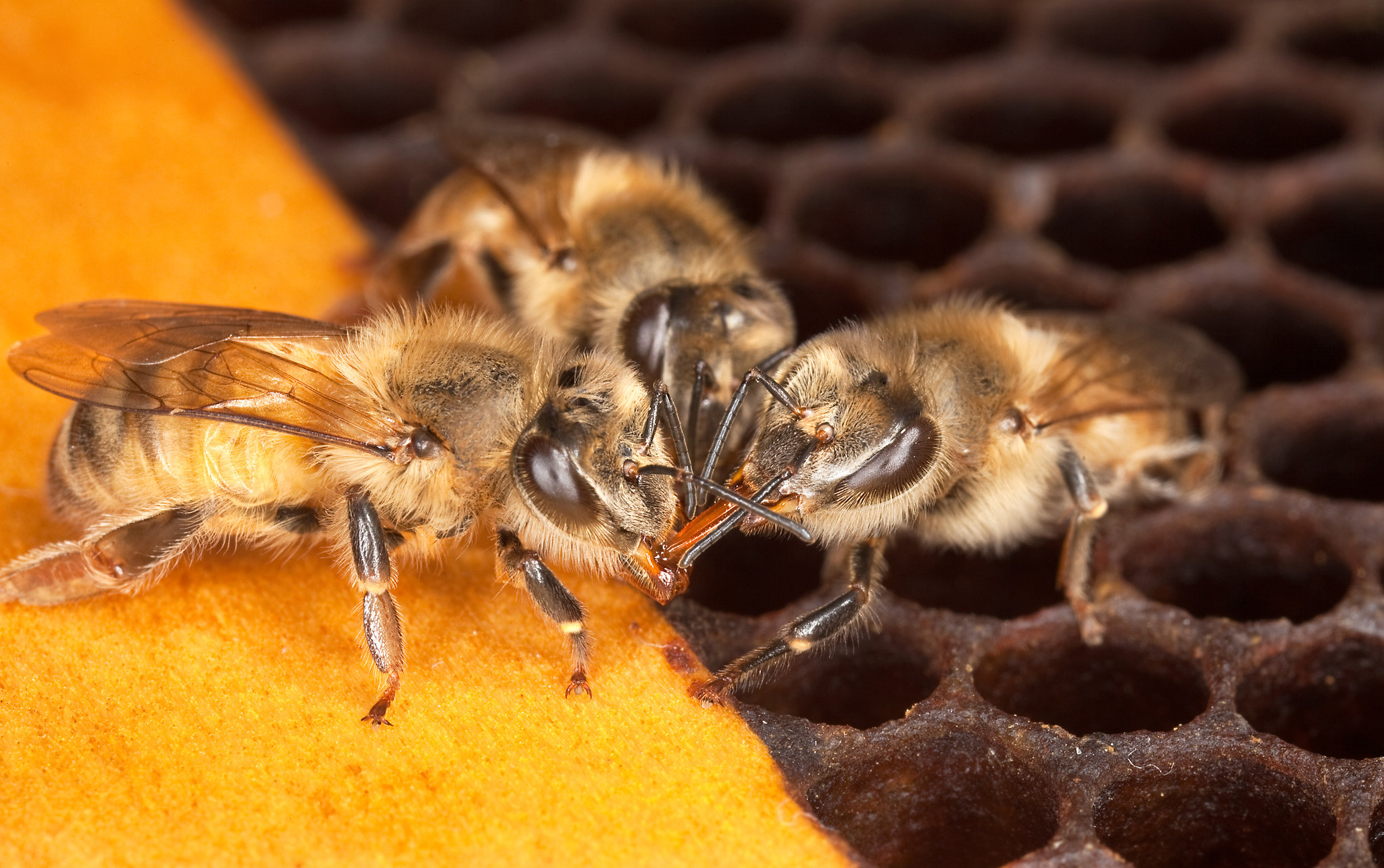
Researchers at the University of Texas at Austin have developed a novel method of combating one of the suspected causes behind colony collapse disorder (CCD) that has been affecting beehives around the world: genetically-modify the bacteria that live in the insects’ guts.
Although there has been a number of proposed causes behind the worldwide decline in bee populations, such as the widespread use of neonicotinoid-based pesticides, one of these causes is a parasitic mite plaguing the insects called the Varroa mite, and an accompanying host of viruses spread by the mite that infects bees, including one called deformed wing virus (DWV).
Two strains of bacteria were genetically altered by the researchers to naturally produce medicine, one that would target the mites, the other targeting the virus. When tested against control groups of infected bees, those that were inoculated with the DWV-fighting bacteria were 36.5 percent more likely to survive a ten-day period than their non-inoculated counterparts; the bees inoculated against Varroa mites themselves fared even better, having a 70 percent chance of surviving over the same period of time.
“This is the first time anyone has improved the health of bees by genetically engineering their microbiome,” according to Sean Leonard, a graduate student and study co-author.
The chances of the genetically-modified bacteria running rampant in the wild is extremely low, as the researchers used a strain that is highly specialized toward life in a bee’s gut, and cannot survive for long outside of that environment. The medicine that the bacteria produces promotes a response in the bees’ immune systems called RNA interference (RNAi); typically, this response is only triggered after an RNA-based virus, like the DWV virus, has already started replicating within the host, but the compound released by the altered bacteria proactively prompts the bees’ immune systems to defend against the virus before it has a chance to start duplicating itself. This same RNAi response is also triggered in the invading mites—but in their case the response is lethal.
The use of genetically-modified bacteria to synthesize medicines is not a new technique: modern insulin used by diabetics is produced by vats of yeast or E. coli bacteria that have been genetically altered to secrete an insulin that is far closer in composition to human insulin than the bovine insulin that had been harvested from cows in the decades prior to 1982, when the microbe-produced insulin was first commercially introduced.
Although the inoculation itself is a simple process—the bees are sprayed with a sugar-water solution containing the bacteria, which they then ingest—the researchers say that there is more work to be done to determine the effectiveness of this new inoculation technique, and its safety if used in an agricultural setting.
Subscribers, to watch the subscriber version of the video, first log in then click on Dreamland Subscriber-Only Video Podcast link.
Nonsense…. give them the original proper gut bacteria !!! Just making matters worse… gmo etc,.. IS the PROBLEM. Why is EVERYTHING SO DUMB ?
That’s a good idea. In fact, it’s an idea so good that the researchers actually did just that, and it’s something I should have thought to include in the article: the bacterium used is called Snodgrassella alvi (S. alvi, for short), a symbiotic microbe already native to the honeybee gut—in other words, the original proper gut bacteria. Remember, this microbe can’t live outside of a bee’s digestive tract, so where else would they get the microbe to begin with?
The only thing altered is that the researchers added an extra gene to their S. alvi so that it would produce an RNA packet that would tell the bees’ immune systems to proactively defend against the DWV virus, and it had the added benefit of being deadly to the Varroa mites. Unlike the old days when much more random methods were used to create transgenic organisms (like Monsanto’s infamous frankenfoods), the much more precise CRISPR method is used to splice targeted genes, meaning that this trait is the only difference between regular S. alvi and the modified version.
The use of GMO (“transgenic” is the word you’re looking for) crops has been ruled out as a factor amongst the culprits behind CCD, so GMO isn’t the problem. The top-listed problems in this case are pesticides, habitat loss and parasites.
Bit of a no win solution- pesticides. Kill the bees immediately with organochlorines or slowly with for example neonicotinoids.
Abandoning plant breeding for natural resistance given commercially available pesticides was/is perhaps the dumbest food security management practice ever made.
Maybe more GM food technology application may be a bit fait accompli if in future. Either in some scenario where bees are effectively wiped out or rendered too mongoloid to pollinate plants en-masse. As in modify the plants to pollinate themselves.
People don’t often realise that processes that are effectively GM have occurred in varieties of scenarios that are a problem. For example in public health: MDR or multi-drug resistance in human disease causing bacteria. Given unregulated, and over use of antibiotics, plenty of superbugs have been bred across the globe.
India is the last place you would want to be if being treated for leukemia given the immune system deletion in the course of treatment. No remaining antibiotics that work in some parts over there.
Chemotherapy is essentially ( and to some extent, radiotherapy) a losing therapy in a similar way due to gradual selection and accelerated natural selection of resistant cancer cell populations/ colonies.